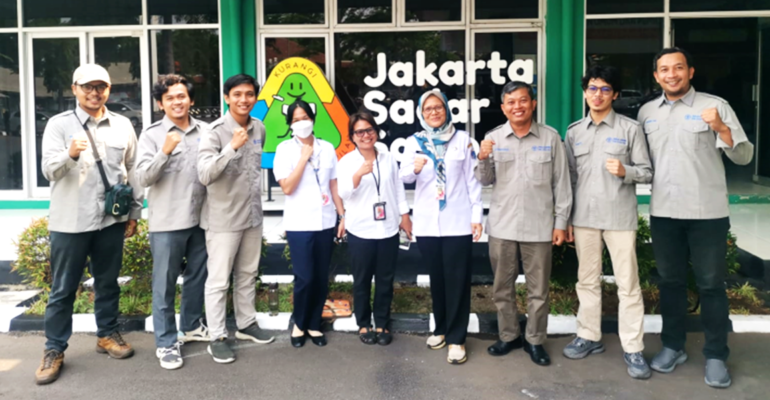PPLH IPB University Disseminates Results of River Water Quality Monitoring in DKI Jakarta

The Environmental Research Centre (PPLH) of IPB University presented the results of river water quality monitoring in DKI Jakarta. The activity took place at the Hall Building of the DKI Jakarta Provincial Environmental Agency (DLH) Office.
This activity is a form of collaboration between DLH DKI Jakarta and PPLH IPB University. This river water quality monitoring is carried out quarterly throughout 2023. It is hoped that these efforts will represent the conditions of the dry season, rainy season and two transitional seasons (dry to rainy transition and rainy to dry transition).
According to River Water Quality Monitoring Team Leader Dr Liyantono, during the monitoring conducted in 2018 until 2023, improvements have been achieved in terms of monitoring quality of the river water environment.
“Firstly, the number of points monitored has increased, namely 90 points in 2018, 111 points in 2019 and 120 points in 2021-2023. The increase in the number of points is done to improve the accuracy of the data generated so that it is more representative of the real state of river water quality in Jakarta,” he explained.
Second, continued Dr Liyantono, in the monitoring carried out in the last three years, there has been an improvement in the quality of data obtained, both insitu observations and those measured by the laboratory exitu.
“This happens because during monitoring at the location, the environmental conditions recorded and the results of in situ parameter measurements at the location of the sampling test are always crosschecked by the monitoring team with the measurement results from the laboratory,” he stated.
He said that the data measured in situ by the monitoring team and by the laboratory (exitu) had a correlation factor. The sampling process has also followed the SNI 8995 Year 2021 procedure. The measurement results have also been compared with the latest second-class water quality standard reference, namely from Government Regulation (PP) No 22 of 2021.
Dr Liyantono, who is also the Executive Secretary of PPLH IPB University, explained that the water quality data obtained showed that fecal coliform and total coliform are parameters that need to be managed immediately, considering that these microbiological parameters contribute significant negative points to the general quality.
“This is a consequence where the feasibility value of river water quality in DKI becomes very low, even dangerous to health if utilised directly,” he explained.
Another note obtained by the team is that the Cideng River area is a watershed that needs to be managed immediately. The reason is, during the three years of monitoring carried out by the team as many as 4 times per year, the condition of the Cideng River has always been heavily polluted and very unfit.
The Cideng Watershed has unique characteristics because the portion of waste water from domestic activities (households and others) has a larger portion compared to water sources that come from nature (springs).
Dr Liyantoro also said, overall in the last two years, monitoring results showed parameters that were often found to be non-compliant during monitoring included fecal coliform, total coliform, ammonia, H2S and free chlorine.
“In terms of results from year to year (2021-2023), in general, there is not much change in water quality, fecal coliform, total coliform, ammonia, H2S and free chlorine are the parameters that most often do not meet quality standards,” he added.
The IPB University lecturer also added that el Nino conditions that occurred some time ago also resulted in a decrease in river discharge measured during monitoring. The drought factor that occurred during the el Nino period in 2023, made pollutants that predominantly came from residents become more concentrated due to reduced water discharge (as a diluent) coming from upstream rivers.
PPLH IPB University experts, Mursalin Aan and Gatot Prayoga as the survey team who participated in monitoring revealed that high levels of heavy metals were found in the sediment. This was unexpected because during measurements of surface water, heavy metal parameters are always not measured because they are often below the detection limit of the tool (undetectable).
” It is quite different, when the sampling test was carried out on heavy metals such as Cu and Zn in the sediment, very high concentrations were obtained,” Aan explained. (my/Rz) (IAAS/RUM)



